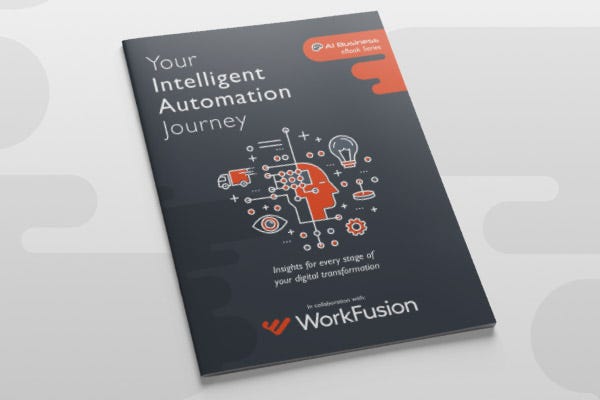Interview with John Sabatini, who leads the Americas Anti-Money Laundering (AML) team at PwC
March 4, 2020

by Guy Matthews
John Sabatini leads the Americas Anti-Money Laundering (AML) team at PwC. For the past fifteen years, he has focused on financial crime and anti-bribery. Today, John is responsible for multiple financial crime units that aspire to combine business knowledge with new IA technologies to make AML processes run more efficiently and productively.
AIB: How are banks keeping up with the modern financial crime landscape?
JS: We’ve seen the market change really rapidly over the last couple of years. This is a high-spend area for banks, and they’ve recognized over the last three or four years that throwing bodies at this problem is completely unsustainable. Some banks were spending hundreds of millions of dollars on growing AML teams, and now they have really started investing in automation, AI, and more thoughtful ways of doing things.
AIB: What are the key aspects of AI that PwC is investing in?
JS: We’ve invested in three key areas of automation and AI. Digitizing the investigative procedures was our first step. Here, we’ve focused on focal entity consolidation – aggregating customer activity across accounts so we can see it all at once. Then, there’s network analytics. There are a lot of common networks, payments, and relationships that investigators spend a tremendous amount of time trying to piece together. Today, you can make maps of recurring payments and transactions without having to do it from scratch every time, and therefore speed up decision-making. Finally, there are common fact patterns (CFP). Once you’ve investigated someone and you’ve come to a resolution, you can identify a CFP, and if nothing has substantially changed in the relationships or the activity, you don’t need to do the work all over again – thanks to automation.
The second area involves designing more intelligent models. Here, we’ve aimed to bring some of the common investigative procedures into the monitoring models themselves, so the models can produce more effective, intelligent alerts based on the results of prior investigations and common relationships in the data.
The third area is dynamic KYC (know-your-customer) modelling. We use AI and automation to modify the customer risk scoring model to ensure outliers are identified and properly scored within the model.
AIB: Does automation impact business culture?
JS: Many financial institutions have developed a culture of empire-building around investigation teams. What we’re seeing now instead is companies building sustainable programs that leverage the latest automation and AI technologies to improve quality, use teams more efficiently, and reduce the number of staff. By reducing the amount of highly repetitive manual activity, firms are able to keep their most talented people reviewing more complicated cases, and use automation to do things more consistently. There is some cultural resistance to this, with a lot of concern around people being replaced by bots – but the overall aim is to make investigation teams more efficient, not obsolete.
Then, there’s the benefit of timeliness. An activity which previously took four hours to complete can now be done in just two, thanks to automation. Everybody on the team is happy, and the output quality is good. We’ll go back, and the same person has still taken four hours, because people are used to taking that amount of time – they plan their day around doing one case in the morning and one in the afternoon.
You really need to implement effective management and governance to ensure that culturally, financial crime teams feel more comfortable with automation. Our approach involves educating people on how machines augment human decisions, rather than replace employees.
AIB: What are some of the issues caused by legacy systems?
JS: There are data issues in three different areas. Firstly, there’s a whole host of problems around reliability of customer data. There’s information that could be years old that may have changed over time without being corrected.
Secondly, there’s the challenge of aggregating information across silos. There could be really good information filled with inconsistencies. As you collect individual datapoints, through something like focal entity consolidation, you’ll see a lot of disparity in the data that needs to be reconciled.
Finally, even in transactional data, there are a lot of missing pieces. Many payment networks out there may not require specific information to process a transaction. There may be some data on the originator, but very little information on the beneficiary. What we’re seeing a lot of companies do today is force correspondent banks to provide that information. Instead of just processing consumer data, compliance officers should be processing transactions on the condition that proper monitoring of the necessary information is carried out.
AIB: What's one advice you would give to someone starting with AML automation?
JS: Everyone is trying to fix the entire data collection process before applying automation to it, but that’s where they fail – they’re taking on too much. Instead, you need to start looking at the very repetitive processes that are using a lot of time and labor (what I call the major muscle groups), isolate them, then identify the points of automation. We’ve seen this bottom-up approach being much more successful. If you try coming at AML from the perspective of a technology looking for a solution, well, we’ve seen that fail repeatedly.

This interview is part of Your Intelligent Automation Journey, an AI Business eBook produced in partnership with WorkFusion.
To receive your free copy of the eBook, please fill in the form below.
About the Author(s)
You May Also Like


.jpg?width=700&auto=webp&quality=80&disable=upscale)
.jpg?width=700&auto=webp&quality=80&disable=upscale)
.jpg?width=700&auto=webp&quality=80&disable=upscale)


.jpg?width=300&auto=webp&quality=80&disable=upscale)

.jpg?width=300&auto=webp&quality=80&disable=upscale)